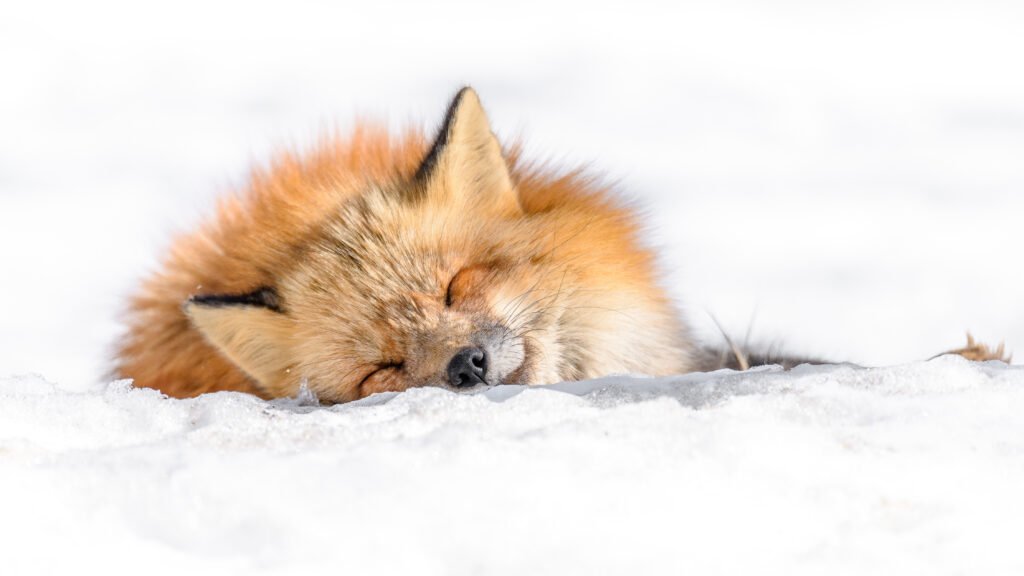
Torpor. It sounds like a weather phenomenon. Or a piece of outwear. The word makes me think of stupor. It’s a word I have never thought about. But during this week’s TWC shift, as people spoke of the bats being in torpor and other animals we have in care who should be hibernating, I started to think, hm. Okay, what is the difference? And do humans also experience a form of torpor, is that why we are all so damn tired this time of year?
So I looked into it and here’s what I learned.
Hibernation is extended torpor. It’s all about saving energy. It is a state of inactivity that is technically a regulated state of reduced metabolism. Breathing and heart rate slow down. Body temperature decreases.
It is not a state of sleep, as we often think. Humans lower their heart and respiratory rate every night when they go to sleep, but torpor is much slower. University of Oxford neuroscientist, Vladyslav Vyazovskiy, wrote, “some scientists suggest that, although we tend to think of hibernation as being like a long sleep, torpor actually creates a sleep-deprived state and the animals need to regularly compensate for this.”
Most animals go into torpor to avoid the cold or heat, but sometimes it has to do with availability of seasonal food sources, avoiding predators, and it can help an animal resist parasites.
According to the Encyclopedia Britannica online, “The torpid state may last overnight, as in temperate-zone hummingbirds and some insects and reptiles; or it may last for months, in the case of true hibernation and the winter torpor of many cold-blooded vertebrates.”
Apparently some bears go into torpor but not deep hibernation, and others go into hibernation. Deep hibernators include chipmunks, garter snakes, and toads.
Racoons, deer mice, skunks, bats, turtles, and even fish like cod and koi, are among the animals that go into torpor but not full hibernation.
Bumble bees hibernate, but honey bees don’t – who knew. (Ok, I know that you, reading this, likely knew.)
Wild turkeys do not hibernate. Gray squirrels, voles, coyotes, red foxes, and opossums will create warm winter dens but they don’t hibernate, either.
Among the birds, torpor occurs in hummingbirds and swifts, nighthawks, and some others.
According to BBC Earth, “Hibernation and torpor are clearly millions of years old. For instance, all three major groups of mammals have evolved the techniques, and those groups diverged tens of millions of years ago. That suggests that at least some of the animals humans are descended from could hibernate. However, we seem to have lost some of the key abilities. For instance, our hearts cannot work if they get too cold.” Also, animals in hibernation don’t urinate or defecate.
That is not stopping scientists from investigating the possibilities of engineering a human hibernation, primarily for astronauts and space travel.
Kelly Drew, a neuropharmacologist at the University of Alaska Fairbanks who studies the brains of hibernating Arctic ground squirrels, is consulting with a company called Spaceworks Enterprises on a NASA-funded project to put humans into hibernation for spaceflight. The University of Oxford’s Vladyslav Vyazovskiy, mentioned above, is part of a team of experts organised by the European Space Agency to work out whether and how we might be able to put humans into a state of stasis. Anaesthesiologist Rob Henning of the University of Groningen in the Netherlands is working with NASA on exploring the possibility of engineering human hibernation to protect astronauts health in space. It appears that hibernation protects from muscle and bone loss.
Buddhist monks are the only humans who appear able to enter a state similar to torpor currently, as they have been known to lower their metabolism by more than 60% through meditation techniques.
I am so ready for a nap. Ciao for now.
